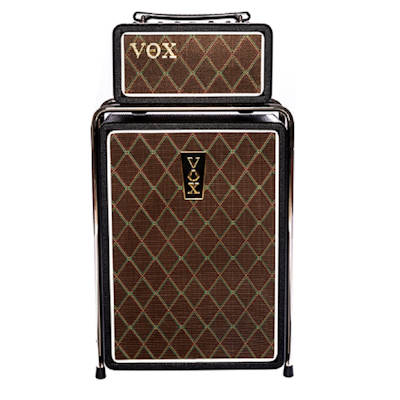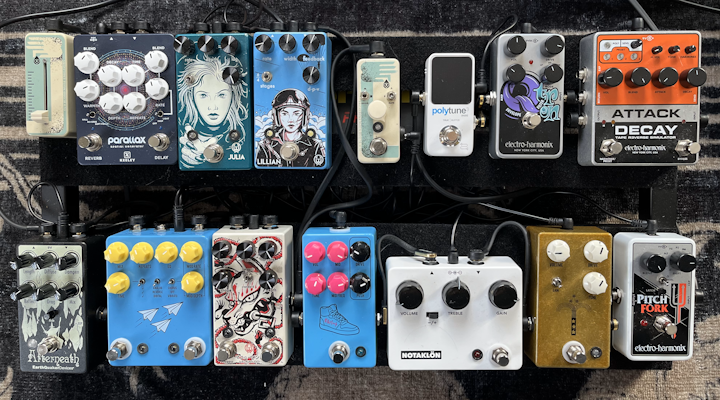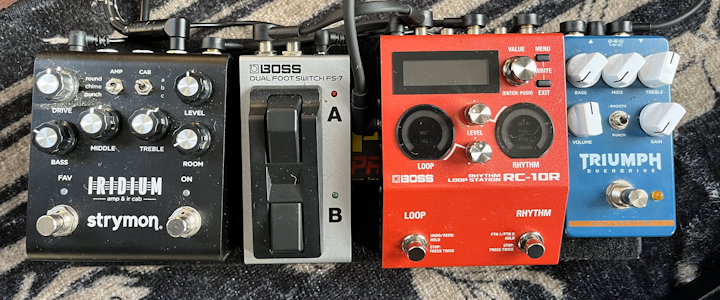Chris Glein Game Design and Life
Pedalboard
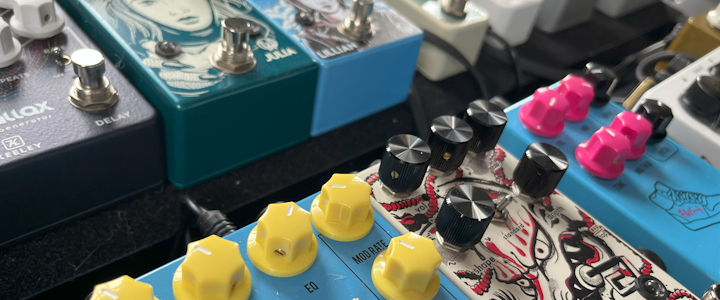 For more of the story of how I got to this arrangement, check out this series.
For more of the story of how I got to this arrangement, check out this series.
Input
Main Board
- EHX Attack Decay
- EHX Q-Tron Nano
- TC Electronic Polytune3 Mini
- EHX Pitch Fork Polyphonic Pitch Shifter
- JHS Morning Glory
- JHS NOTAKLÖN
- JHS PG-14
- Walrus Audio Julia Chorus
- Walrus Audio Lillian Phaser
- Walrus Audio Monument (expression: OBNE Expression Ramper)
- JHS Flight Delay
- Earthquaker Devices Afterneath (expression: OBNE Expression Slider)
Baby Board
Output
Main Board
EHX Attack Decay
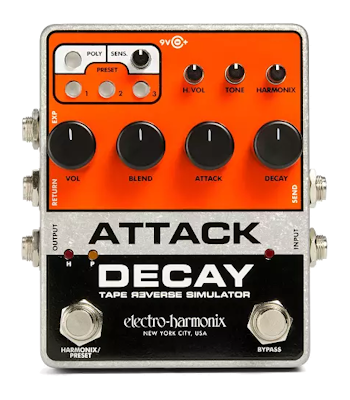 This demo sold me on the Attack Decay. It has a fuzz option built in, and as an EHX pedal as far as I can tell that a Big Muff style fuzz. The 3 programmable favorites I’m using are:
This demo sold me on the Attack Decay. It has a fuzz option built in, and as an EHX pedal as far as I can tell that a Big Muff style fuzz. The 3 programmable favorites I’m using are:
- Basic fuzz
- A trigger for a low growl of fuzz on stronger notes, which is very satisfying when playing a lead line
- A bow-like effect with late attack and quick decay
EHX Q-Tron Nano
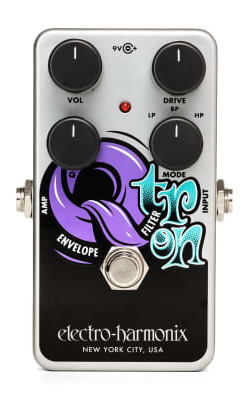 I mostly have a Q-Tron because John Mayer has shown it being great for one or two songs. It’s an envelope filter, effectively an auto wah. It creates truly funky tones that have a quacking vowel sound to them. It’s very sensitive to signal levels, thus why it’s so early in the signal chain. It’s one of my least used pedals, but when the song is right for that vibe this is a super fun sound.
I mostly have a Q-Tron because John Mayer has shown it being great for one or two songs. It’s an envelope filter, effectively an auto wah. It creates truly funky tones that have a quacking vowel sound to them. It’s very sensitive to signal levels, thus why it’s so early in the signal chain. It’s one of my least used pedals, but when the song is right for that vibe this is a super fun sound.
TC Electronic Polytune3 Mini
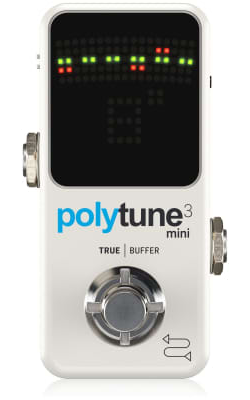 On many instruments I use a headstock clip-on tuner to tune, but I also have this on-board pedal tuner. The Polytune is one of the most popular tuning pedals available. It’s main differentiator is that it can tell you the tuning accuracy of all your strings at once with an open strum. In theory this lets you quickly identify which string is out of tune, which is neat, but not something I turn to often. What I find more useful is the live readout of whatever pitch I’m playing. That can reinforce knowing the note names of what you’re actually playing, or help you figure out unfamiliar instruments by piping a microphone into your board.
On many instruments I use a headstock clip-on tuner to tune, but I also have this on-board pedal tuner. The Polytune is one of the most popular tuning pedals available. It’s main differentiator is that it can tell you the tuning accuracy of all your strings at once with an open strum. In theory this lets you quickly identify which string is out of tune, which is neat, but not something I turn to often. What I find more useful is the live readout of whatever pitch I’m playing. That can reinforce knowing the note names of what you’re actually playing, or help you figure out unfamiliar instruments by piping a microphone into your board.
EHX Pitch Fork Polyphonic Pitch Shifter
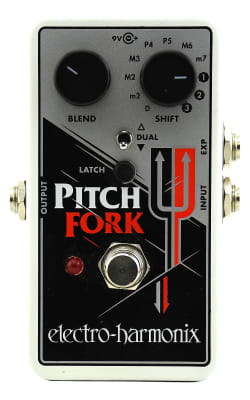 The Pitch Fork is one of my most used petals, primarily because it’s quicker to downshift my guitar one octave with this pedal then to swap in a proper bass guitar. When I’m laying down a rough loop, I’m gonna want a bass line, and this gets me there fast. Mind you, the pedal does a ton more than that. It can thicken your sound by adding octaves above and/or below, with or without your the dry signal. Or you can do the same thing with fifths (power chords all day), fourths, thirds, or even a warbly detune.
The Pitch Fork is one of my most used petals, primarily because it’s quicker to downshift my guitar one octave with this pedal then to swap in a proper bass guitar. When I’m laying down a rough loop, I’m gonna want a bass line, and this gets me there fast. Mind you, the pedal does a ton more than that. It can thicken your sound by adding octaves above and/or below, with or without your the dry signal. Or you can do the same thing with fifths (power chords all day), fourths, thirds, or even a warbly detune.
JHS Morning Glory
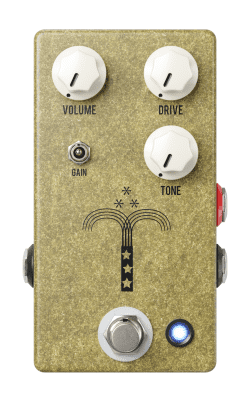 When I went down this pedal rabbit hole, I looked at a lot of people’s boards on Reddit. And you see the Morning Glory on a ton of them, often described as an “always on” pedal. I don’t leave mine on all the time, but it is definitely a common add of special sauce that makes everything sound nicer. It’s some subtle boost and crunch that’s easy to switch on without losing anything, or to stack grit into my drive effects which come afterwards.
When I went down this pedal rabbit hole, I looked at a lot of people’s boards on Reddit. And you see the Morning Glory on a ton of them, often described as an “always on” pedal. I don’t leave mine on all the time, but it is definitely a common add of special sauce that makes everything sound nicer. It’s some subtle boost and crunch that’s easy to switch on without losing anything, or to stack grit into my drive effects which come afterwards.
JHS NOTAKLÖN
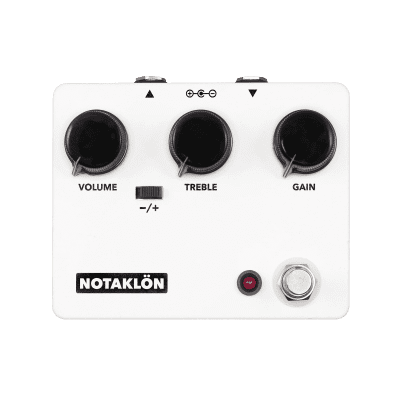 The pitch video for this DIY kit absolutely stole my heart. So I was among the initial wave of tens of thousands who flooded orders. I put it in front of my tween daughter, and she built me a guitar pedal. Which was a magic experience and I will always treasure this pedal.
The pitch video for this DIY kit absolutely stole my heart. So I was among the initial wave of tens of thousands who flooded orders. I put it in front of my tween daughter, and she built me a guitar pedal. Which was a magic experience and I will always treasure this pedal.
Do I like the sound of the pedal? Absolutely I do. The Notaklon gives me a nice dirty overdrive that cuts through with a warm crunch. It stacks nicely with the Morning Glory if I want something even dirtier.
JHS PG-14
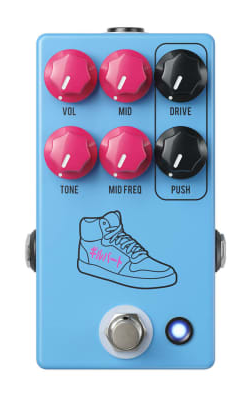 I was charmed into the PG 14 pedal by the infectious energy of Paul Gilbert‘s multiple videos done in partnership with JHS to promote the pedal. I had never heard Paul Gilbert play before, which makes it weird that I have his signature pedal (named for his shoe size) on my board. But this thing sounds freaking awesome. It gets to this crunchy almost glitchy space that sounds so raw and cool. So that’s the configuration where I leave it by default, but I also know from prior experimentation that I can turn it into a number of different sounds if I need to.
I was charmed into the PG 14 pedal by the infectious energy of Paul Gilbert‘s multiple videos done in partnership with JHS to promote the pedal. I had never heard Paul Gilbert play before, which makes it weird that I have his signature pedal (named for his shoe size) on my board. But this thing sounds freaking awesome. It gets to this crunchy almost glitchy space that sounds so raw and cool. So that’s the configuration where I leave it by default, but I also know from prior experimentation that I can turn it into a number of different sounds if I need to.
Walrus Audio Lillian Phaser
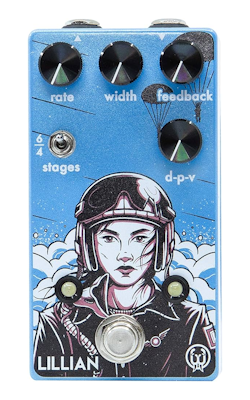 I’d never been ecstatic about my EHX Small Stone, as I could never get its phaser effect to be subtle enough for more frequent use. The Lillian fixes that handily by having a mix knob, but also so many other knobs that let me dial in a variety of gentle (or not gentle) phasing. That makes me a lot more likely to stomp this switch. Additionally, as one of my later acquired pedals I felt like I could choose one that I vibed with aesthetically, and the art on this pedal is great.
I’d never been ecstatic about my EHX Small Stone, as I could never get its phaser effect to be subtle enough for more frequent use. The Lillian fixes that handily by having a mix knob, but also so many other knobs that let me dial in a variety of gentle (or not gentle) phasing. That makes me a lot more likely to stomp this switch. Additionally, as one of my later acquired pedals I felt like I could choose one that I vibed with aesthetically, and the art on this pedal is great.
Walrus Audio Julia Chorus
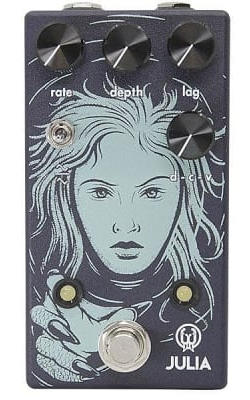 Chorus hasn’t been an effect I personally prioritize highly. So I have a chorus pedal that’s for people that aren’t so into chorus. The Julianna demo video sold me on this being something I was interested in… but the Julianna is an expensive stereo version. So I opted for its mono predecesor, the Julia. I’ve found I’m far more likely to use a mild chorus, but honestly most of the time I use this with the mix knob dialed into full vibrato (no clean signal, just the modulated signal), because a little warble is nice.
Chorus hasn’t been an effect I personally prioritize highly. So I have a chorus pedal that’s for people that aren’t so into chorus. The Julianna demo video sold me on this being something I was interested in… but the Julianna is an expensive stereo version. So I opted for its mono predecesor, the Julia. I’ve found I’m far more likely to use a mild chorus, but honestly most of the time I use this with the mix knob dialed into full vibrato (no clean signal, just the modulated signal), because a little warble is nice.
Keeley Parallax Spatial Generator
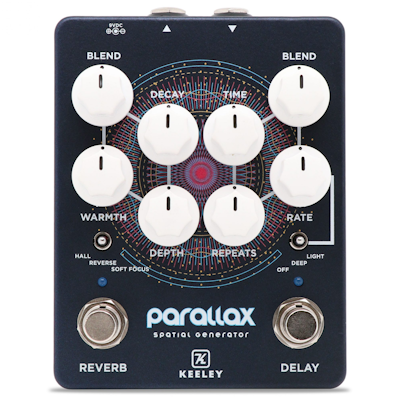 This is a flexible two-in-one reverb/delay. I can dial it in for a more standard reverb and a short “slap back” delay, or I can crank everything up and take it into orbit. Since adding the Flight Delay and Afterneath to the board this is somewhat eclipsed, but I leave it dialed into some common reverb and delay sounds so I essentially have some presets on tap.
This is a flexible two-in-one reverb/delay. I can dial it in for a more standard reverb and a short “slap back” delay, or I can crank everything up and take it into orbit. Since adding the Flight Delay and Afterneath to the board this is somewhat eclipsed, but I leave it dialed into some common reverb and delay sounds so I essentially have some presets on tap.
Walrus Audio Monument
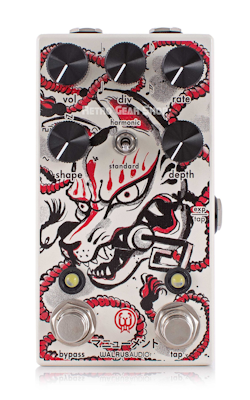 I really like tremolo, so I got a fancy tremolo. The Monument provides tap tempo. Quickly while I’m playing I can mash in the rate I want for my tremolo and match it to what I’m playing. With a twist of a knob I can choose the subdivisions. I’m also able to adjust the waveform from triangle to a more choppy square wave, or choose harmonic tremolo.
I really like tremolo, so I got a fancy tremolo. The Monument provides tap tempo. Quickly while I’m playing I can mash in the rate I want for my tremolo and match it to what I’m playing. With a twist of a knob I can choose the subdivisions. I’m also able to adjust the waveform from triangle to a more choppy square wave, or choose harmonic tremolo.
OBNE Expression Ramper
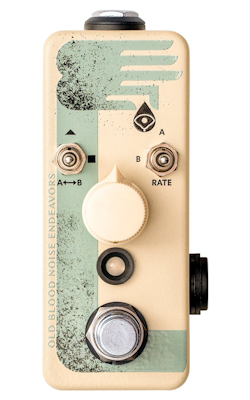 This allows me to program expression start/stop values, speed, shape, and kick the whole thing off with a press of a switch (or put on loop). It’s a creative tool in my kit that I don’t use frequently but is pretty fun. I have it connected to the Monument (controlling the rate).
This allows me to program expression start/stop values, speed, shape, and kick the whole thing off with a press of a switch (or put on loop). It’s a creative tool in my kit that I don’t use frequently but is pretty fun. I have it connected to the Monument (controlling the rate).
JHS Flight Delay
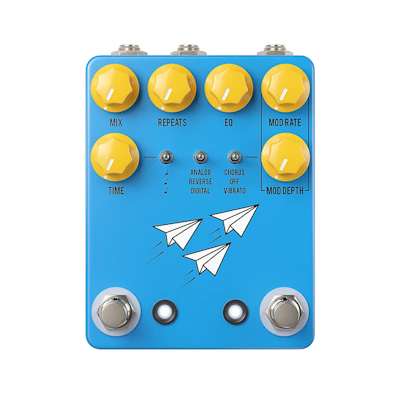 JHS made a great video to launch this pedal in late 2024. I’ve had delay effects through my Parallax, but there were some quality of life improvements I was seeking. Tap tempo is the most important one, as I have discovered that getting a delay timing dialed in with a knob is not fun. Tapping in with a foot switch is much more immediate and more accurate for my usage, plus there’s a knob to choose standard subdivisions. In fact a lot of what drew me to this pedal was the user interface; the way the functions are divided up between the switches and knobs is intuitive. Mostly the only thing this pedal gave me I didn’t have was tap tempo and reverse delay, but the way it’s packaged together has me feeling more in control.
JHS made a great video to launch this pedal in late 2024. I’ve had delay effects through my Parallax, but there were some quality of life improvements I was seeking. Tap tempo is the most important one, as I have discovered that getting a delay timing dialed in with a knob is not fun. Tapping in with a foot switch is much more immediate and more accurate for my usage, plus there’s a knob to choose standard subdivisions. In fact a lot of what drew me to this pedal was the user interface; the way the functions are divided up between the switches and knobs is intuitive. Mostly the only thing this pedal gave me I didn’t have was tap tempo and reverse delay, but the way it’s packaged together has me feeling more in control.
Earthquaker Devices Afterneath
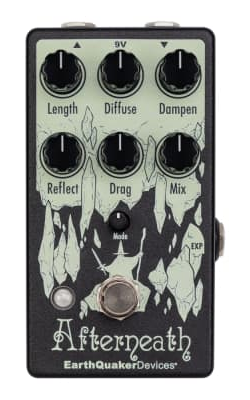 I didn’t need this pedal. I wanted this pedal. It has a wizard on it and an awesome name. And with it I can create cavernous ambient echoes. The pedal sits somewhere between reverb and delay; its effect is accomplished with delay, but it feels more like a reverb in creating a feeling of physical space. It’s the sort of pedal that inspires me to play differently. It also has an expression input that affects the key space of the echoes; that one is fun and inspired an additional purchase below.
I didn’t need this pedal. I wanted this pedal. It has a wizard on it and an awesome name. And with it I can create cavernous ambient echoes. The pedal sits somewhere between reverb and delay; its effect is accomplished with delay, but it feels more like a reverb in creating a feeling of physical space. It’s the sort of pedal that inspires me to play differently. It also has an expression input that affects the key space of the echoes; that one is fun and inspired an additional purchase below.
OBNE Expression Slider
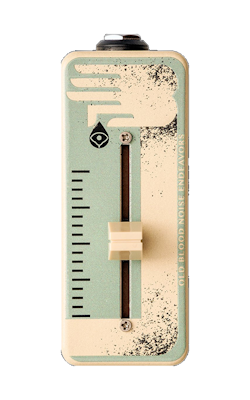 I have this expression slider connected to the Afterneath’s drag value, modifying the key of the trails. Generally just kicking this from one setting to another creates a fun artificial swoosh that’s very digitial but very fun.
I have this expression slider connected to the Afterneath’s drag value, modifying the key of the trails. Generally just kicking this from one setting to another creates a fun artificial swoosh that’s very digitial but very fun.
Baby Board
Wampler Triumph Overdrive
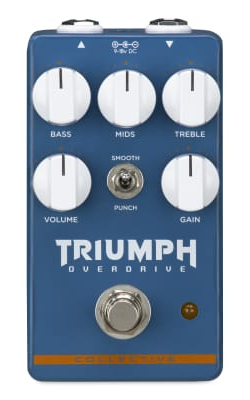 I got the Triumph as a flexible EQ overdrive pedal. As with many pedals, I was directed to it by The JHS Show where it was described as a better Bad Monkey. It saves space over something I had done before which is putting an EQ pedal directly after a drive pedal to shape it. When I created the smaller “baby board” I realized I wanted an EQ on it but I could just use the EQ of the Triumph and then have overdrive on tap if I needed it.
I got the Triumph as a flexible EQ overdrive pedal. As with many pedals, I was directed to it by The JHS Show where it was described as a better Bad Monkey. It saves space over something I had done before which is putting an EQ pedal directly after a drive pedal to shape it. When I created the smaller “baby board” I realized I wanted an EQ on it but I could just use the EQ of the Triumph and then have overdrive on tap if I needed it.
Boss RC-10R Loop Station
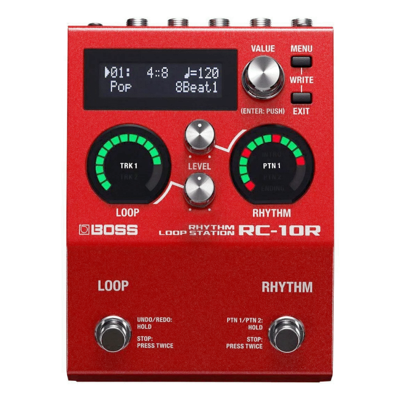 Upgrading my loop pedal was one of my most researched and most impactful decisions. Specifically I opted to trade up for something that had rhythm and had 2 loops so I could do verse/chorus alternating improvisation. I use this constantly and I absolutely love it.
Upgrading my loop pedal was one of my most researched and most impactful decisions. Specifically I opted to trade up for something that had rhythm and had 2 loops so I could do verse/chorus alternating improvisation. I use this constantly and I absolutely love it.
Boss FS-7 Footswitch
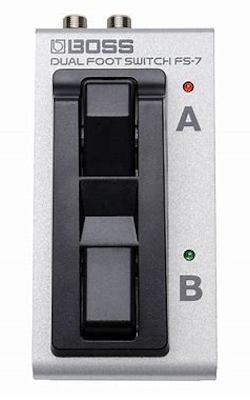 My 2 button rhythm looper is so heavily used by me that I’ve felt some common functions could benefit from a dedicated button. Thankfully it can be extended and customized with an external foot switch. I use these 2 extra buttons for:
My 2 button rhythm looper is so heavily used by me that I’ve felt some common functions could benefit from a dedicated button. Thankfully it can be extended and customized with an external foot switch. I use these 2 extra buttons for:
- Tap tempo: I can change the BPM with the main dial on the looper, which is precise but fiddly. With this footswitch I can mash the added button to get the time set fast and without bending over.
- Undo/Redo: Technically I can do a long press on one of the existing buttons to undo the last layer I recorded. But this is a common enough action that I prefer having its own button.
Stymon Iridium
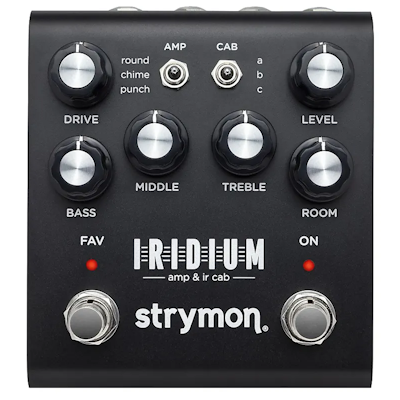 This pedal is an “amp sim,” which is to say it emulates the sonic qualities of various amps in one tiny box. You can get the response you want (Fender, Vox, Marshal, or otherwise) at the volume you want and in a travel friendly format.
This pedal is an “amp sim,” which is to say it emulates the sonic qualities of various amps in one tiny box. You can get the response you want (Fender, Vox, Marshal, or otherwise) at the volume you want and in a travel friendly format.
I feel like I’m underutilizing it. The main speaker I have in my practice space is an amp (a Vox Mini Superbeetle), and running an amp sim into an amp is sonic double dipping. I’d rather pair with a more neutral output, but my practice space hasn’t otherwise warranted a PA system or monitors. However when I use the Iridium straight into my recording mixer or use it with headphones, everything’s great.
Input
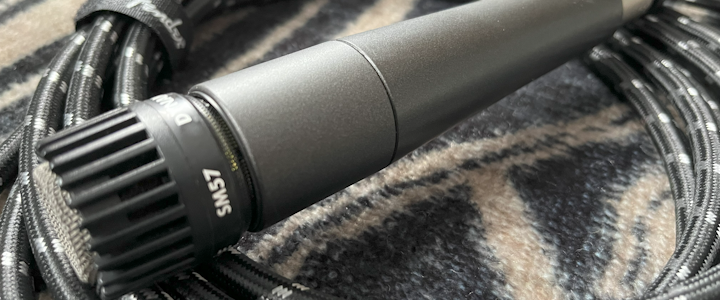
Art Tube MP Studio V3
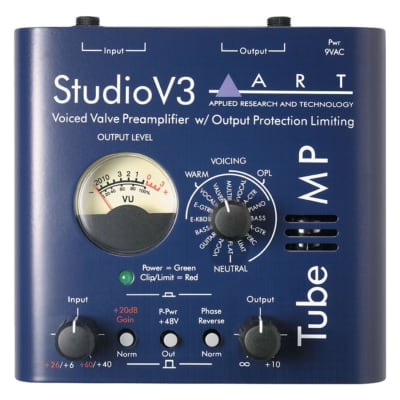 Without a microphone preamp if you plug a microphone into a guitar rig the levels are going to be way too low. This works well enough, with some knobs to adjust the input signal.
Without a microphone preamp if you plug a microphone into a guitar rig the levels are going to be way too low. This works well enough, with some knobs to adjust the input signal.
JHS Mini A/B Switch
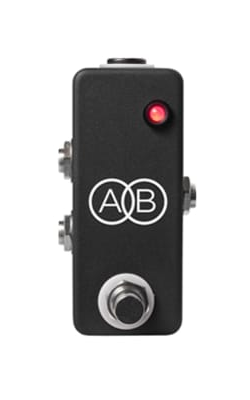 The goal of the board is to enable me to be creative in real time. When I have to bend down and fiddle with some cables, unplugging one and plugging another in… that gets in the way of being present. I want swapping the input from one instrument to another to be immediate. Enter the A/B switch. I have this set up to toggle between the direct instrument line in and the output of the microphone preamp. So with a quick tap I can switch between the Stratocaster and the bouzouki, or between a keyboard and a trumpet.
The goal of the board is to enable me to be creative in real time. When I have to bend down and fiddle with some cables, unplugging one and plugging another in… that gets in the way of being present. I want swapping the input from one instrument to another to be immediate. Enter the A/B switch. I have this set up to toggle between the direct instrument line in and the output of the microphone preamp. So with a quick tap I can switch between the Stratocaster and the bouzouki, or between a keyboard and a trumpet.
Ernie Ball VP JR
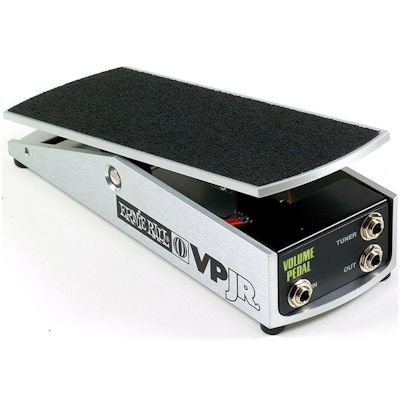 I use this either as a quick mute or to do volume swells by cutting off the initial attack on what I’m playing. It lives off of the board because its big and doesn’t need power so it might as well float on its own.
I use this either as a quick mute or to do volume swells by cutting off the initial attack on what I’m playing. It lives off of the board because its big and doesn’t need power so it might as well float on its own.
Output
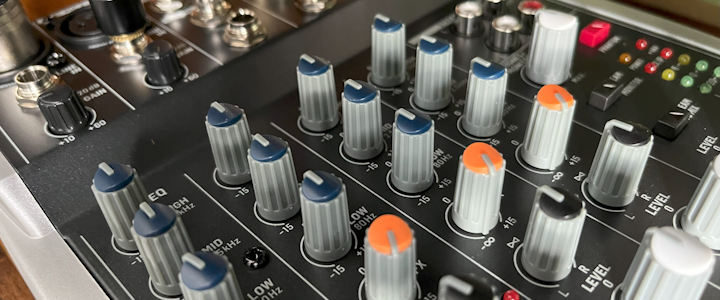
Behringer XENYX 802S 8-Channel Mixer
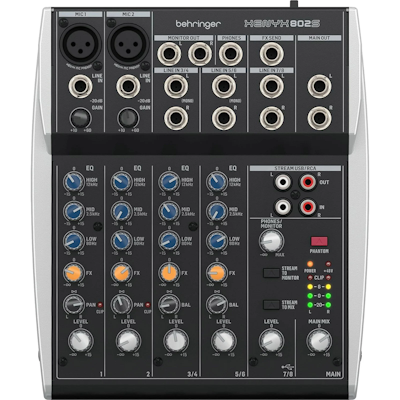
Vox Mini Superbeetle
